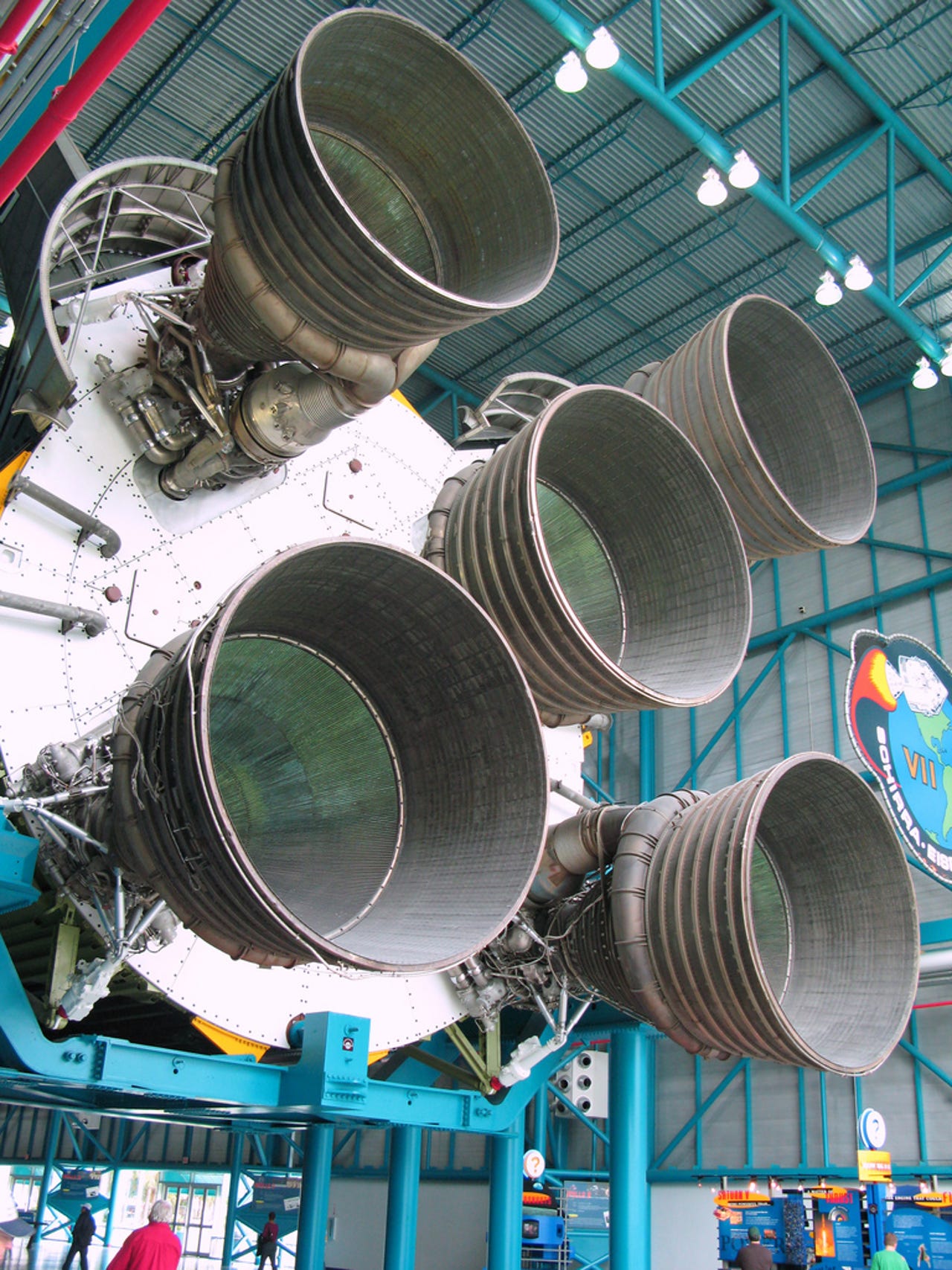Rocketdyne F-1 and J-2 Rocket Engine Development and Testing


Each of the five liquid kerosene (RP-1) and liquid oxygen (LOX) fueled F-1 engines were capable of delivering 1.5 million pounds of takeoff thrust, for a combined thrust of 7.5 million pounds during the boost phase. (Jason Perlow)
Read more about Rocketdyne and its role in the Apollo Program
Dr. Werner von Braun, lead designer of the Saturn V rocket, shown here dwarfed by the S-IC Stage and its F-1 engines. (NASA)
A schematic of the main component parts of the Rocketdyne F-1 Rocket Engine.
A 1961 photo of the F-1 undergoing early testing at Edwards Air Force Base. (Photo Courtesy Rocketdyne)
Another dramatic photo of the F-1 on its gigantic test stand undergoing a test firing. (Photo Courtesy Rocketdyne)
F-1 engines being assembled at Rocketdyne. (Photo Courtesy Rocketdyne)
F-1 engines being assembled at Rocketdyne (Photo Courtesy Rocketdyne)
Five J-2 engines, with approximately 225,000 pounds of thrust each, were on the second stage of the Saturn V. A single J-2, with restart capability was on the S-IVB stage for trans lunar injection (TLI). Liquid Hydrogen was used as a fuel for its improved Specific Impulse (Jason Perlow)
J-2 engines on the factory floor, circa 1964. (Photo Courtesy Rocketdyne)
J-2 engines on the factory floor, circa 1964. (Photo Courtesy Rocketdyne)
The J-2 engines are mated to the S-II stage, with the Cape Canaveral launch complex shown in the distance.